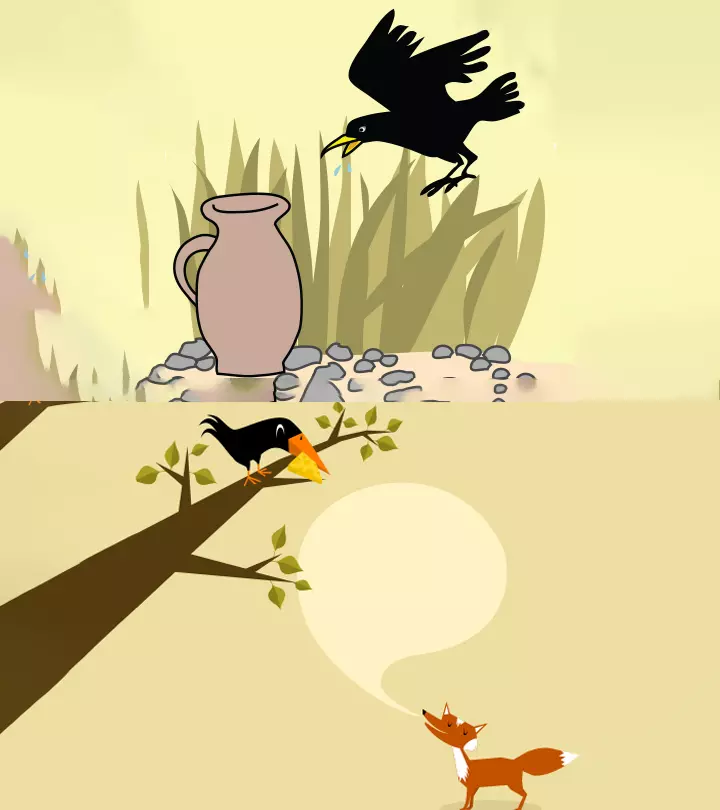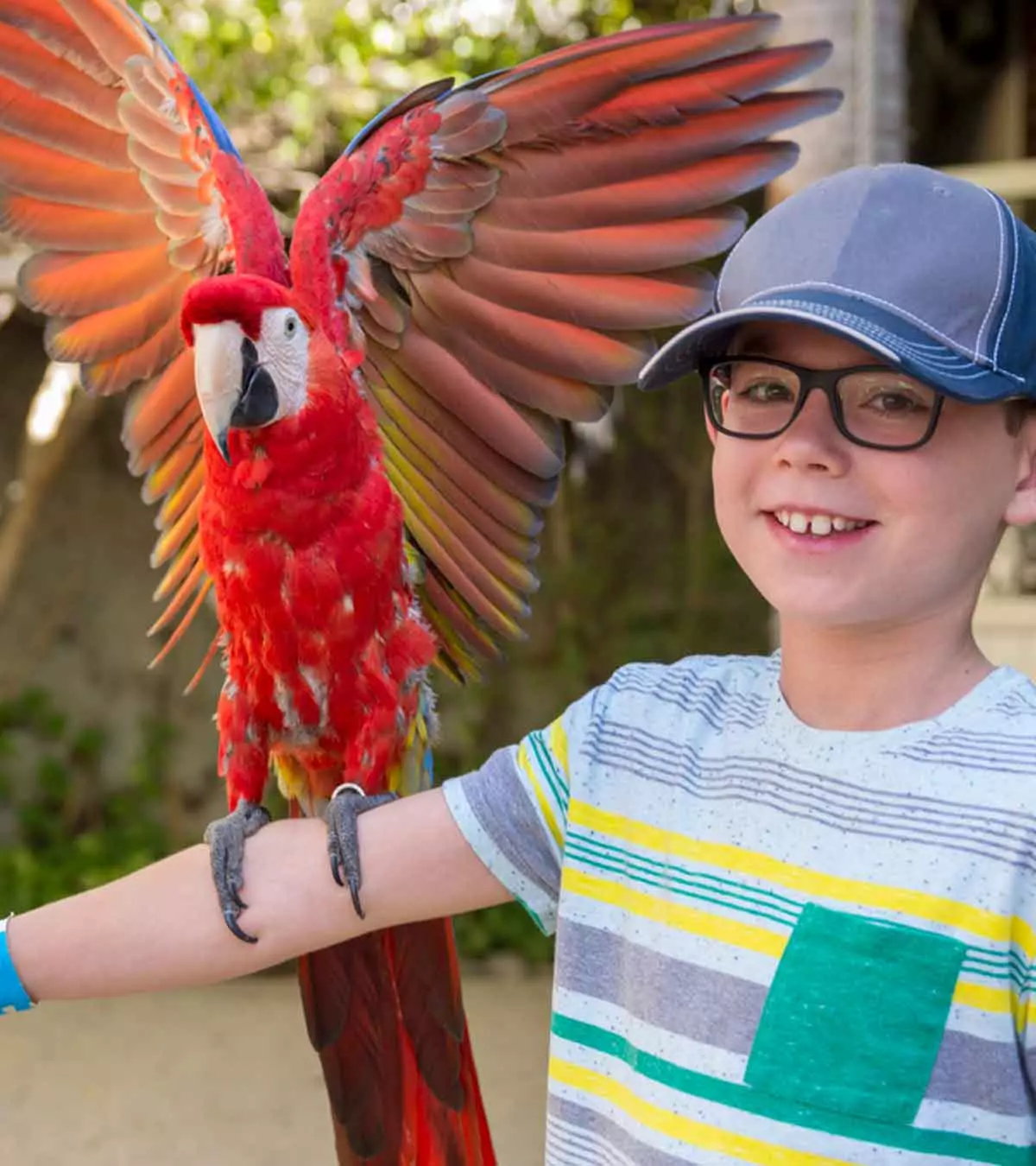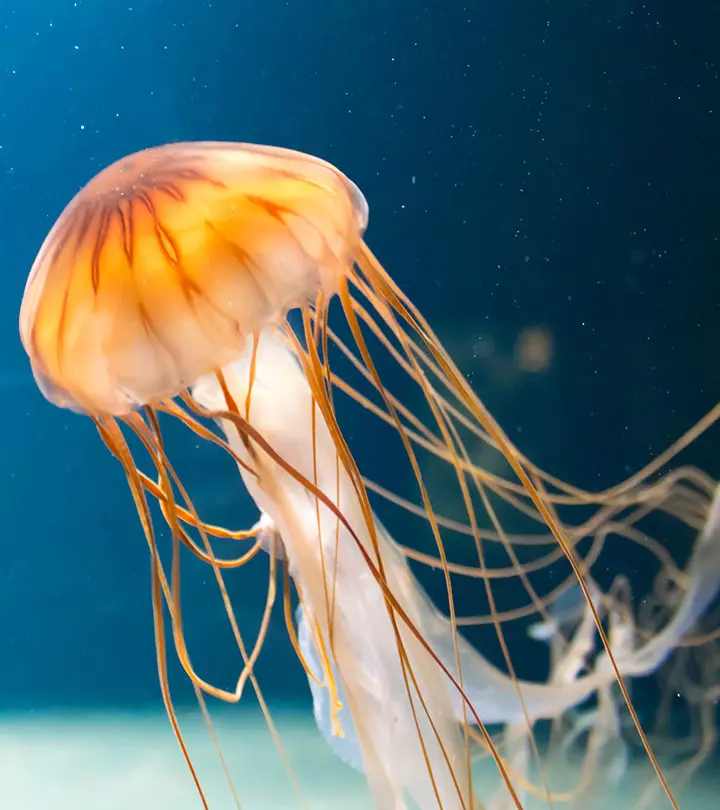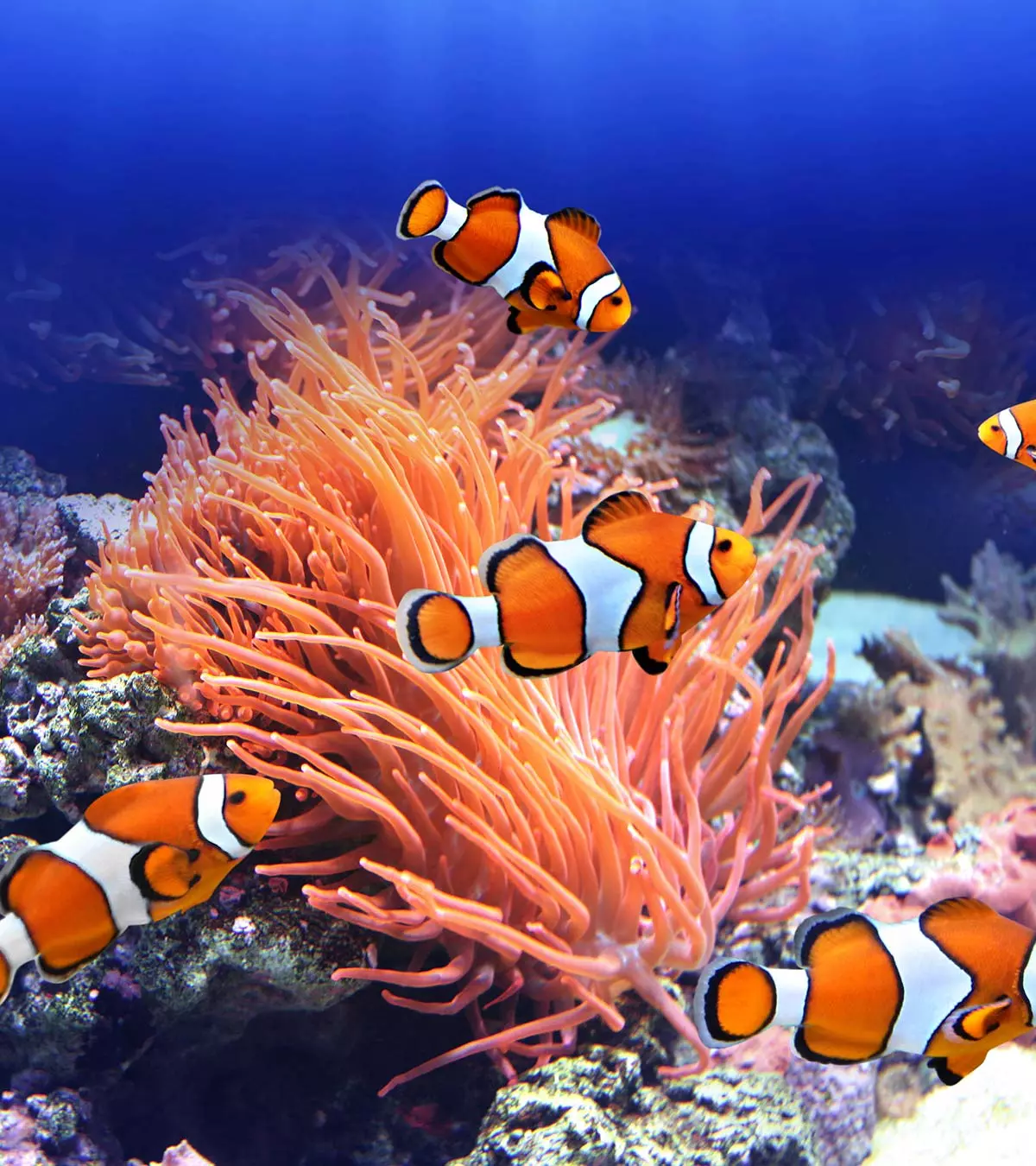
Image: Shutterstock
If Disney’s “Finding Nemo” got your child excited to learn more about underwater creatures, you might want to introduce them to clownfish facts for kids. Thanks to the movie, this h If you are interested in teaching your child about this popular saltwater fish, here we are with the coolest facts that you perhaps didn’t know before. The humble reef-dwelling water animals can be easily recognized by almost anyone today (well, at least those who have watched the movie).
Key Pointers
- The family Pomacentridae includes Clownfish, which are brightly colored with orange and white stripes.
- Clownfish are found in the warm waters of the Pacific and Indian oceans, and they migrate to deeper waters during winter to keep warm.
- Male clownfish take care of up to 1,000 eggs laid by female clownfish until they hatch.
- Clownfish live in small groups known as schools and are territorial, with a dominance hierarchy where the most aggressive female holds the top position.
- They are omnivorous and consume both plants and animals.
12 Amazing Clownfish Facts For Kids
1.Scientific Classification And Species Of Anemone:
Clownfish belong to the Amphiprioninae in the Pomacentridae family. There are around 28 to 30 species of clownfish found in yellow, orange, maroon and other colors. Percula Clownfish is the most common. It is five inches long and bright orange in color with white stripes.
2. Range:

Image: Shutterstock
Clownfish are endemic to the warm waters of the Pacific and Indian Oceans, including the Great Barrier Reef of Australia and the Red Sea. They usually inhabit the base of the sheltered reefs or shallow seas. The clownfish migrate to deeper water during the winter season to keep themselves warm.
Some clownfish reside in the tropical waters among the coral reefs. Clownfish that inhabit the coral reefs drift hundreds of times near coral heads. When someone bothers them, they barb into the gap among the corals.
 Did you know?
Did you know?3. Anatomy:
Clownfish have a small and flattened body, and a projecting dorsal fin. They use the pectoral fins in a paddle-like manner.
The color of the clownfish depends upon the type of the species, but most of the clownfish are yellow, black, orange or red with white stripes or blotches. The longest a clownfish can reach is 18cm or 7.1 inches. The smallest clownfish to date was 4.9 inches long. The average weight of a clownfish is 250 grams. The shape and size differ from species to species.
4. Gestation:
Female clownfish can lay up to 1,000 eggs during the full moon. The eggs are placed on the underwater rocks and the male clownfish take care of them until they hatch. The incubation lasts six to ten days and ends with an enormous number of clownfish appearing two hours after dusk Almost all the fertilized eggs hatch and reach adulthood.
5. School:
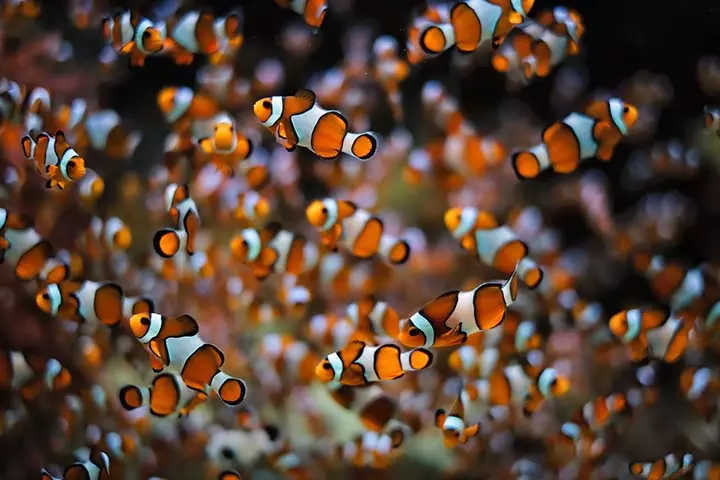
Image: IStock
The clownfish live in small groups called the school, composed of the mating couple and their offspring. These territorial fishes fiercely defend their homes against other clownfish. There’s also a strict dominance hierarchy in the group of clownfish, with the most aggressive female at the top. If the female clownfish dies or is removed from the group, the most dominant male would turn female and become the head. The remaining males will move up the rankings on the hierarchy.
6. Relationship With Anemone:
Clownfish share a symbiotic relationship with anemone, because of which they are named anemonefish. The partnership is undeterred by the fact that anemones have tentacles that can sting. In fact, this four-inch fish lives among the tentacles, thus seeking protection from the predators. Wondering how the poisonous tentacles do not harm the clownfish? A layer of mucus on the skin makes the fish immune to the stings. Clownfish also gets to eat the leftovers from the anemone’s meal.
The anemone also benefits from having the clownfish around as the latter nibble parasites and dead tentacles that irritate the former. Sometimes, the clownfish bring food for the anemone to eat and provide nutrients from their droppings. This is one of the interesting facts about clownfish for kids to know!
 Trivia
Trivia7. Diet:
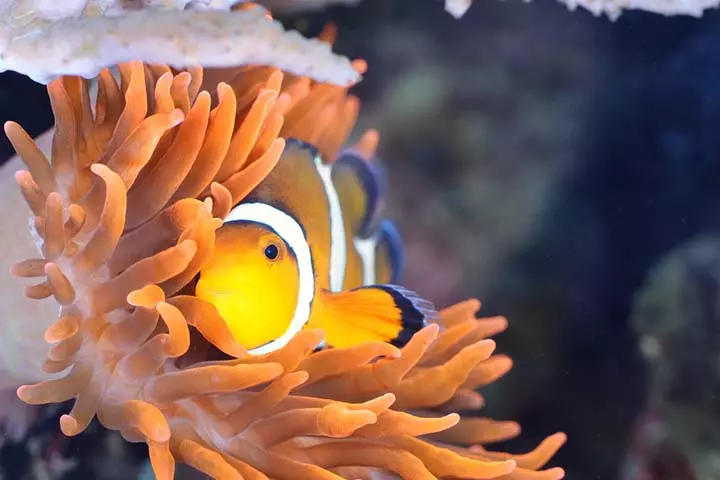
Image: Shutterstock
Clownfish are omnivorous animals, which means that they eat both plants and animals. Besides the dead tentacles and the leftovers of the anemone, clownfish eat plankton, eats plankton, mollusk, zooplankton, phytoplankton, small crustaceans and various algae. Algae covers 20 to 25% of their diet. The diet of a clownfish is dependent on its species, the area of its habitation, and the food available. In captivity, clownfish are fed with fish flakes, fish pellets, and other nutrients.
8. Behavior And Communication:
Clownfish are an active species of fish and are often found doing various forms of acrobats. They are also very aggressive and violent by nature. They attack divers vehemently if they sense any danger from them.
Clownfish communicate by producing ticking noises with their pharyngeal teeth that are aligned with the throat. The male clownfish create sound pulses on particular occasions while the females produce aggressive sounds.
9. Poor Swimmers:
Clownfish are not the best swimmers in the ocean. They spend much of the time hiding in water. When they venture out, their swimming pattern is very erratic. At times, they swim sideways while on other occasions, they swim quickly for short bursts.
10. The Caring Father Fish:
Father clownfish is a dedicated and caring parent. He prepares the nest for the mother clownfish to lay the eggs. He guards the eggs after being laid and cleans the nest, by removing the debris that falls on it.
11. Clownfish Predators:
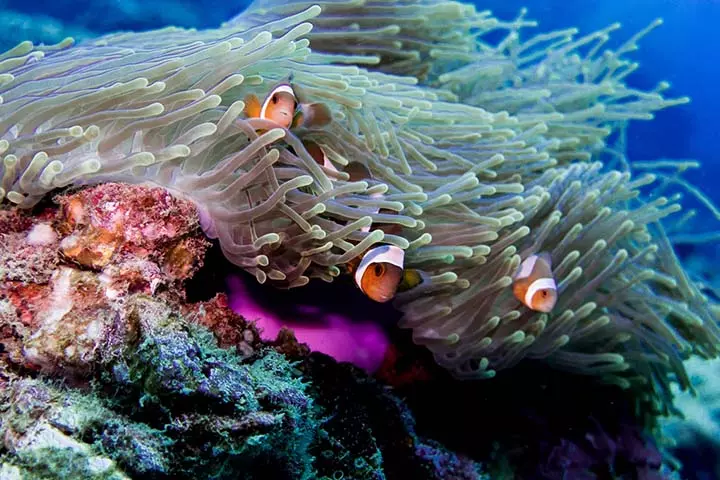
Image: IStock
Due to their tiny size, clownfish are attacked by some predators like stingrays, sharks, eels and other big fish. But, clownfish are difficult to catch as they hide in the sea anemone.
12. Threats To Clownfish:
The biggest enemy of clownfish is humans. Humans catch clownfish to display in their aquariums. The other threats are ocean pollution, destruction of the habitat and overfishing. Fortunately, the population of clownfish is still stable, and they are not on the list of endangered species.
A Few More Fun Facts About Clownfish For Kids
- A clownfish can live up to 10 years.
- Clownfish make 40% of the marine ornamental trade. The fish are either captured from the wild or are bred in captivity.
- Percula clownfish introduces itself to the anemone by performing a dance.
- Out of 1,000 different types of anemones, only ten can host clownfish.
- Clownfish got its name from the stripes and bouncing movements, which make them appear as clowns.
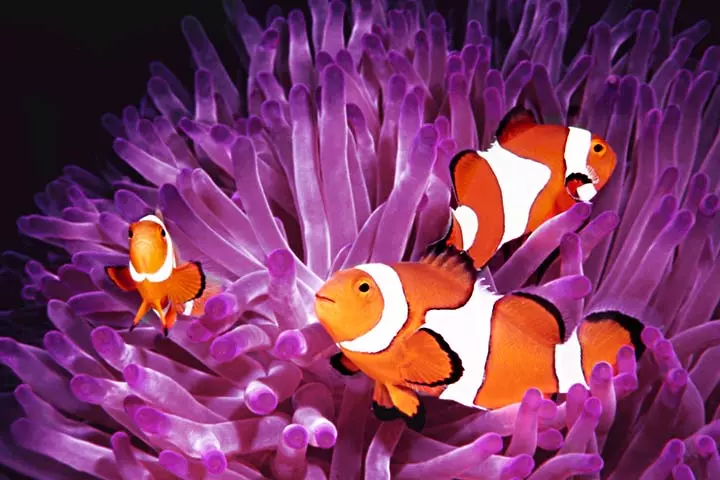
Image: IStock
- Clownfish have different names in different languages. In Russian, they are called obyknovennaya rybka-kloun , in Japanese kakure-kumanomi and Danish klovnfisk .
- All the clownfish are born males. Some turn into females when the dominant female of the group dies. The change cannot be reversed.
- Clownfish can survive only for two to five hours in an aquarium if kept as pets. They live longer in the wild.
Frequently Asked Questions
1. Do clownfish eat their eggs?
A female clownfish can lay thousands of eggs. A male clownfish fertilizes these eggs, and typically eats any eggs that are damaged or may be infertile (1).
2. How deep can clownfish swim?
Clownfish can swim to and live in habitats at a depth of around 39 feet. They live in coastal seaward reefs and lagoons (2).
3. What can we do to help protect clownfish and their habitat?
According to The Centre for Biological Diversity in San Francisco, clownfish and the coral reefs they inhabit are in danger of being destroyed because of global warming, aquarium trade, and ocean acidification. Scientists have predicted that coral reefs will be the first ecosystem to collapse due to the threat of global warming. Some steps that we can take to protect clownfish and their habitat include stopping the aquarium trade and indiscriminate waste dumping into the world’s oceans and tackling global warming by reducing carbon emissions (3).
4. How do clownfish reproduce?
Clownfish reproduce through a fascinating social structure. They live in groups led by a dominant male and female, with smaller males in the mix. The dominant male secures his position by seizing the best food opportunities. If the female dies, the dominant male transforms into a female, and the largest smaller male takes over. The reproductive process involves the female laying thousands of eggs, and the male fertilizes them. The male takes care of the eggs, eating any damaged or infertile ones. This unique social and reproductive system ensures the survival and dynamics of clownfish communities (4).
Clownfish make wonderful fathers that look after the nest and protect their eggs. The clownfish, also known as anemonefish, lives in a symbiotic relationship with sea anemones and feeds on planktons, crustaceans, and algae. Ticking noises help them communicate, and they can survive for up to ten years in the wild. Unfortunately, human activities, such as fishing for aquarium displays, pose a serious threat to their population and life expectancy. These and many other fascinating clownfish facts for kids can pique their interest in this vibrantly colorful fish and their favorite Disney character, Nemo.
Infographic: Interesting Information On Clownfish For Children
Clownfish are colorful and unique fishes known for their peculiar and stunning body stripes. In our infographic, we will learn more about their characteristics, behavior, and underwater dwellings. Share these facts with your child to surprise them and spike their interest and knowledge about these stunning sea creatures. Illustration: Momjunction Design Team
Illustration: Fascinating Clownfish Facts And Information For Kids
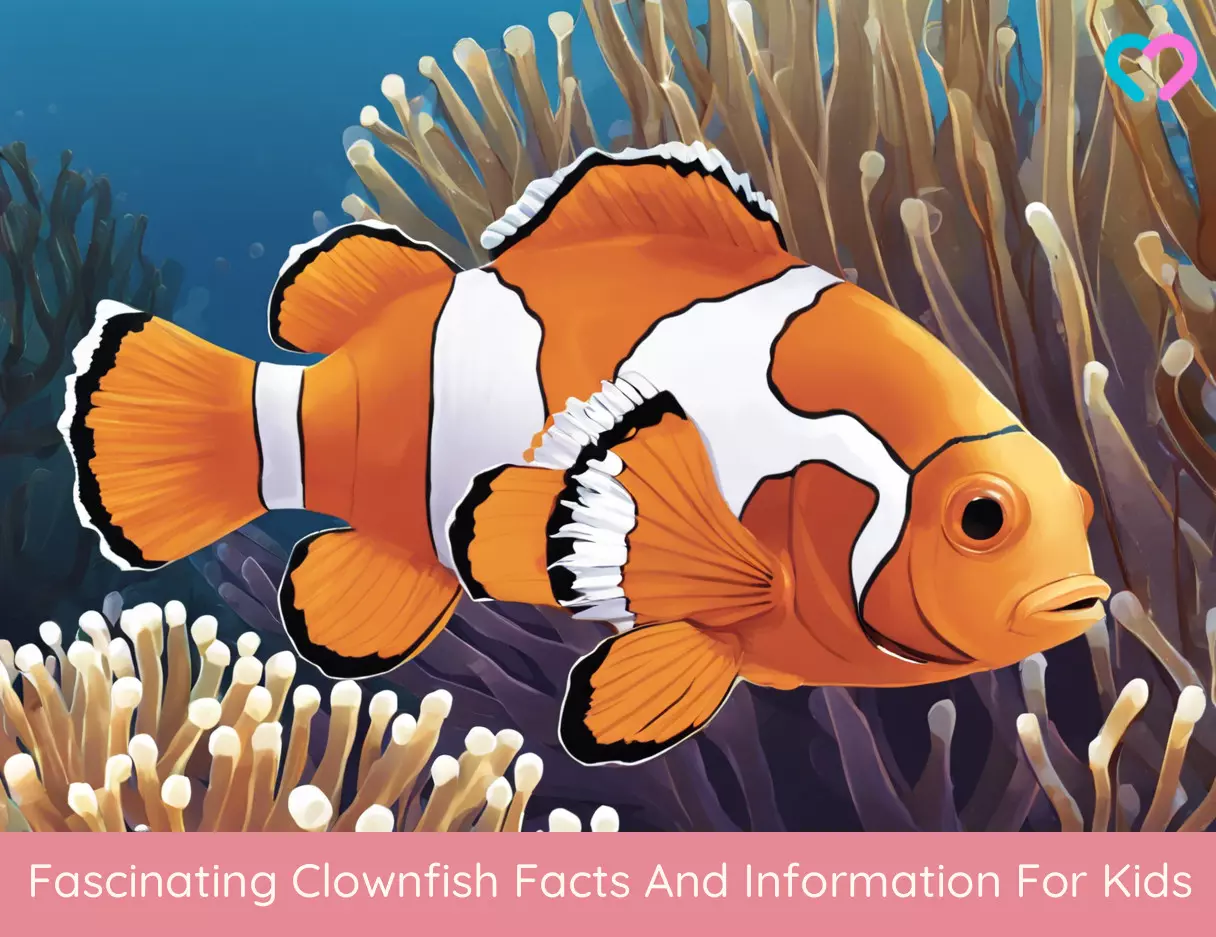
Image: Stable Diffusion/MomJunction Design Team
Learn all about clownfish! From their bright colors to their unique habitat, this video will teach you the best clownfish facts for kids!
References
- Clownfish.
https://www.barrierreef.org/the-reef/animals/clownfish - Clownfish.
https://www.aquariumofpacific.org/onlinelearningcenter/species/clown_anemonefish - Protection Sought for Clownfish That Inspired Finding Nemo.
https://www.biologicaldiversity.org/news/press_releases/2012/reef-fish-09-13-2012.html - False Percula Clownfish.
https://denverzoo.org/animals/false-percula-clownfish/
Community Experiences
Join the conversation and become a part of our nurturing community! Share your stories, experiences, and insights to connect with fellow parents.
Read full bio of Elisa Yi
Read full bio of Manjiri Kochrekar
Read full bio of Harshita Makvana
Read full bio of Trisha Chakraborty















